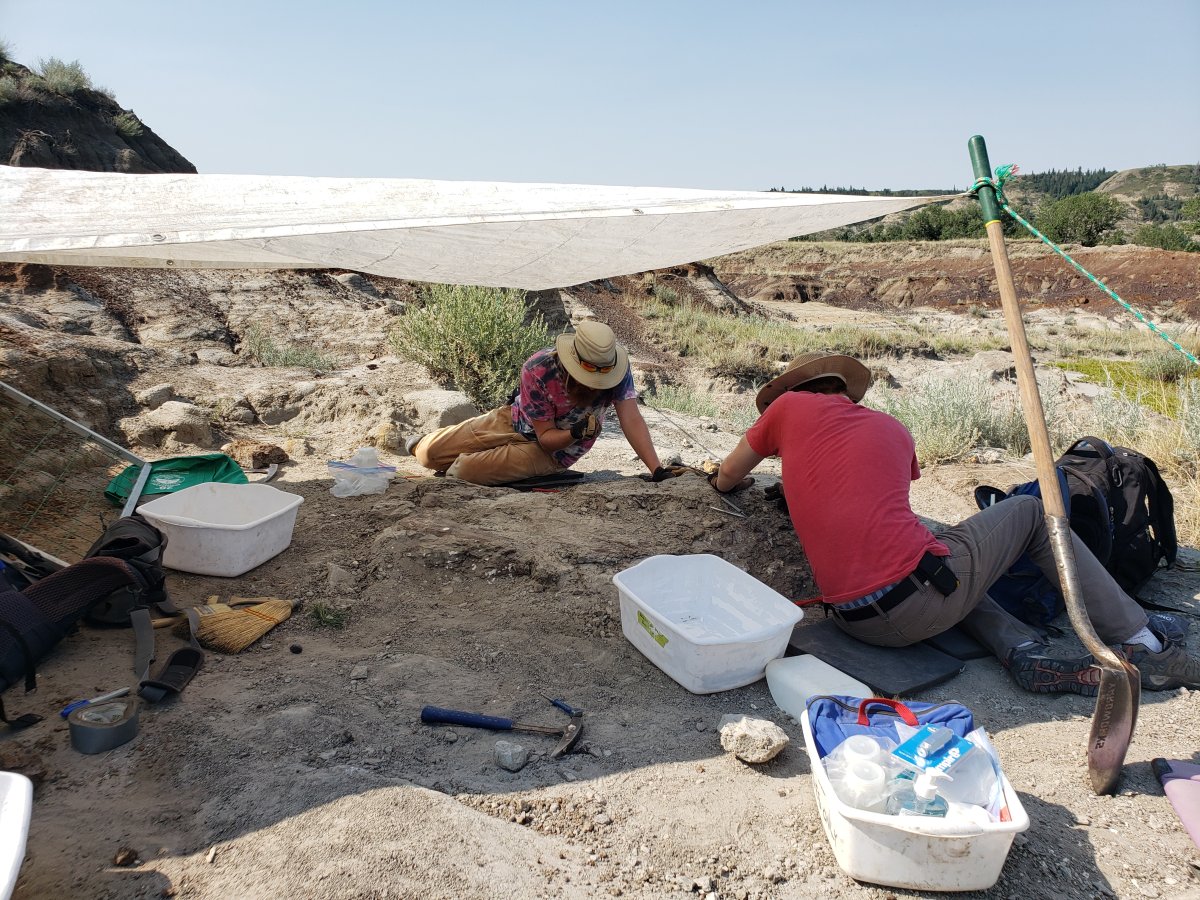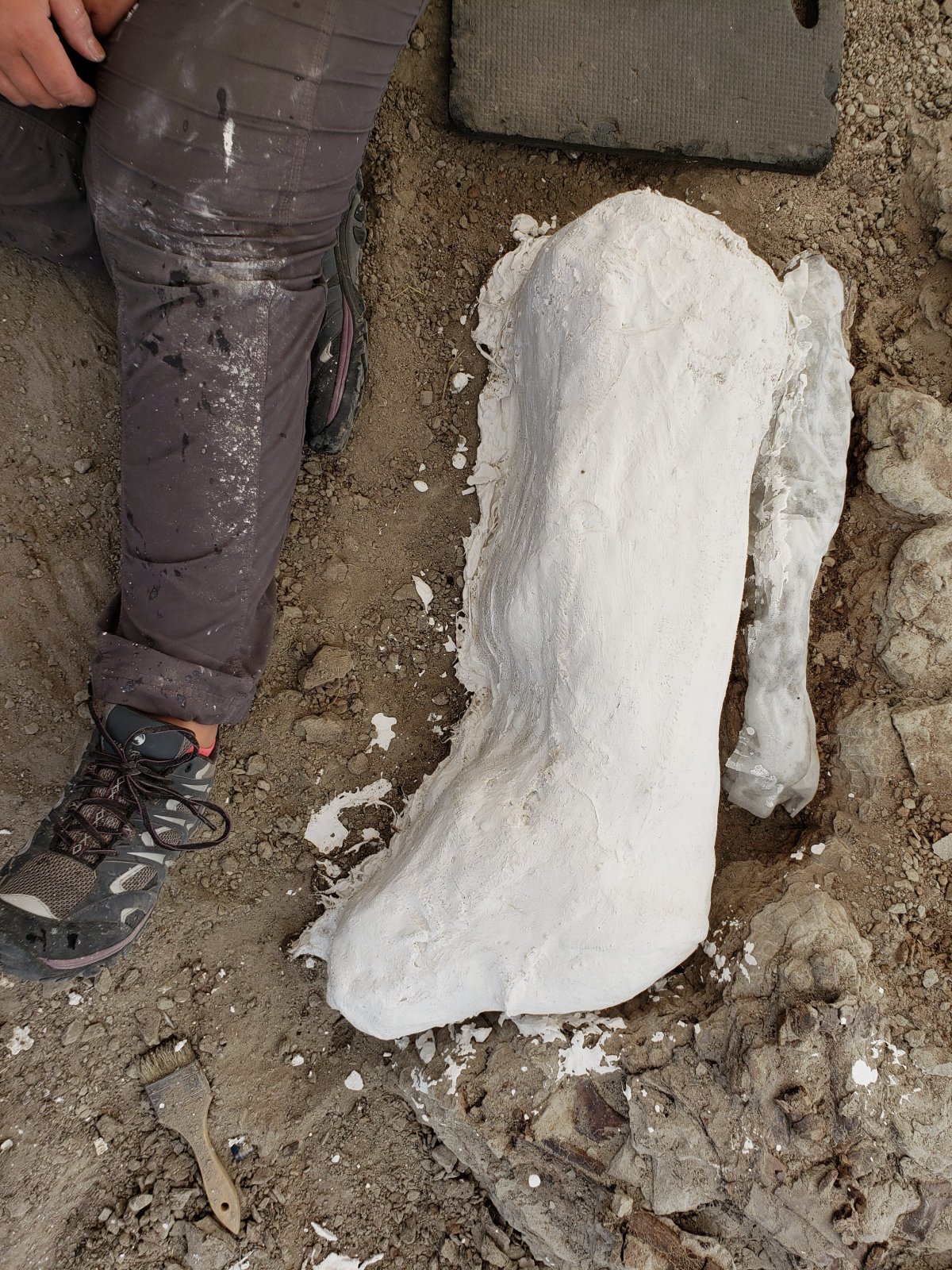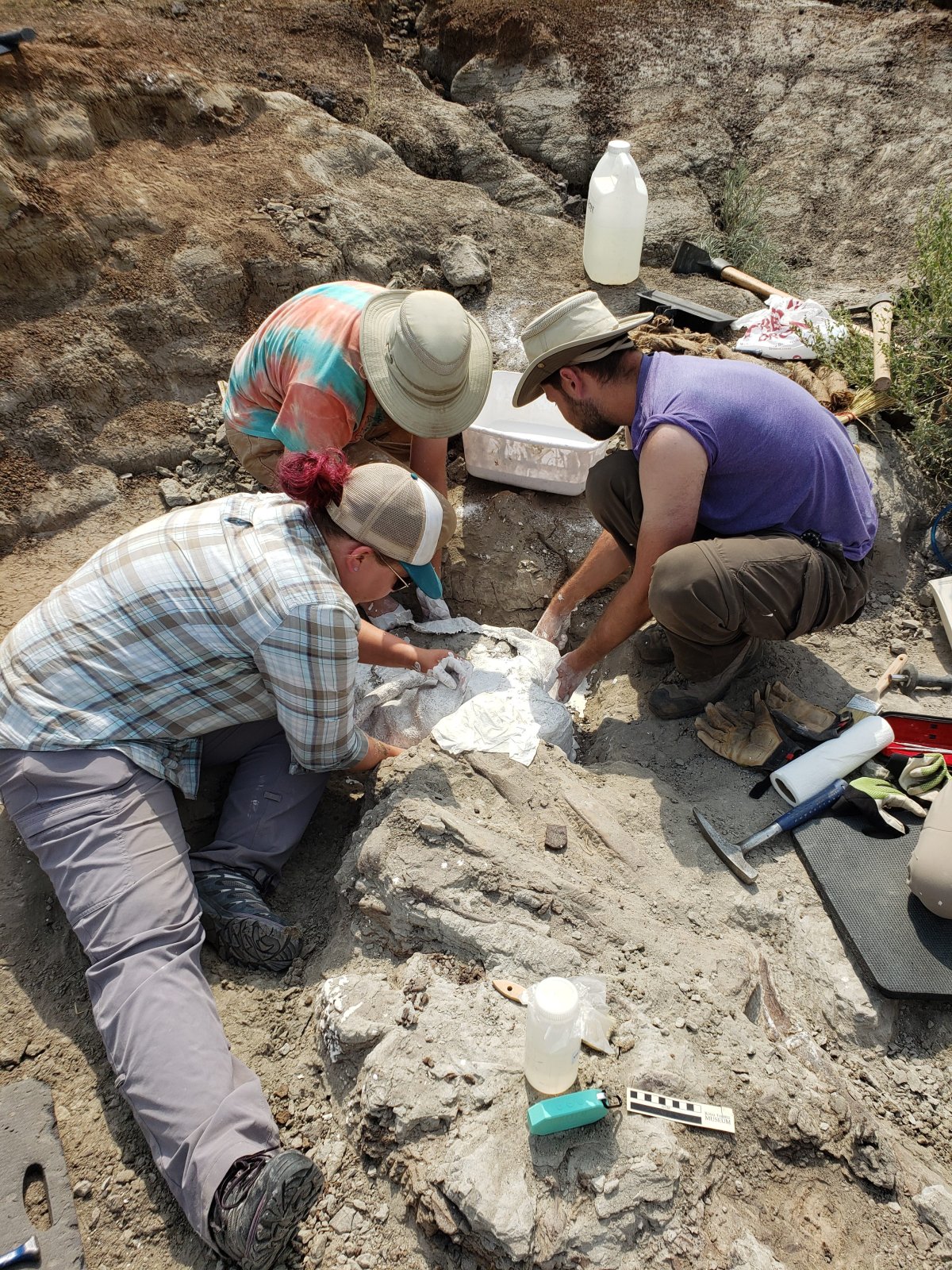By Heide Pearson Global News
Updated August 12, 2021

University of Alberta students dig out the skeleton of a hadrosaur in the Badlands. Courtesy: Mark Powers
A group of paleontology students with the University of Alberta are hoping that by air or water they’ll get a hadrosaur moving across the southern Alberta Badlands once again.

Mark Powers and his team of students are working hard to excavate the skeleton of a duck-billed dinosaur first located in 2018, as part of a student-led dig that started in 2015.
READ MORE: Little girl finds unique fossil at Alberta lake
The skeleton is embedded in a hill in a remote location between the Tolman Bridge and Drumheller, near the Morrin Bridge along the Red Deer River.
Unlike most skeletons found, which are typically lying down, this dinosaur fossil is in a top-down position, Powers said, meaning it’s a unique excavation.
“It’s a very interesting challenge to excavate,” he said.
“But it also leads to a lot of interesting sort of concepts of taxonomy, or the burial process, and how it was buried and what happened at the end of its life.”

A group of paleontology students with the University of Alberta are hoping that by air or water they’ll get a hadrosaur moving across the southern Alberta Badlands once again.

Mark Powers and his team of students are working hard to excavate the skeleton of a duck-billed dinosaur first located in 2018, as part of a student-led dig that started in 2015.
READ MORE: Little girl finds unique fossil at Alberta lake
The skeleton is embedded in a hill in a remote location between the Tolman Bridge and Drumheller, near the Morrin Bridge along the Red Deer River.
Unlike most skeletons found, which are typically lying down, this dinosaur fossil is in a top-down position, Powers said, meaning it’s a unique excavation.
“It’s a very interesting challenge to excavate,” he said.
“But it also leads to a lot of interesting sort of concepts of taxonomy, or the burial process, and how it was buried and what happened at the end of its life.”

Part of a harosaur skeleton being excavated by University of Alberta students in the Badlands. Courtesy: Mark Powers
However, that’s not the only challenge these students are facing when it comes to unearthing this particular prehistoric creature.
First of all, it’s a three-kilometre hike to and from the site from their campsite near Starland, taking them roughly an hour and a half.
Last year, they were unable to make any progress on the dig because of COVID-19.
However, that’s not the only challenge these students are facing when it comes to unearthing this particular prehistoric creature.
First of all, it’s a three-kilometre hike to and from the site from their campsite near Starland, taking them roughly an hour and a half.
Last year, they were unable to make any progress on the dig because of COVID-19.
Now a smaller crew has fewer days to complete its work and while it’s great to be digging up more pieces of the ancient herbivore, the specimen pieces are so large and heavy, the students are struggling to get them out.
“If we could get it onto a boat, even if we don’t drive the boat, we could literally just walk it along the river, back to the camp and then load it into a truck,” Powers said.
“So that would be the cheapest and most ideal scenario.”

University of Alberta students dig out the skeleton of a hadrosaur in the Badlands. Courtesy: Mark Powers
Typically, specimen pieces, called jackets, can be carried out if they’re under 70 pounds, but these are much larger, weighing in at about 120 pounds each.
Powers said the students are hoping to find people who will donate their time and resources to help get the fossils out along the river.
READ MORE: 12-year-old Nathan finds rare dinosaur fossil ‘of great significance’ in southern Alberta
“It is great when there’s volunteers involved, just because there’s a lot of hurdles as a student and a researcher to try and go through the insurance and all those sorts of things to actually acquire a boat,” he said.
“And then there’s extra funding in terms of renting the boat, which exceeds our budget because our budget primarily covers our staying costs.”
Powers can be reached at powers1@ualberta.ca.
Typically, specimen pieces, called jackets, can be carried out if they’re under 70 pounds, but these are much larger, weighing in at about 120 pounds each.
Powers said the students are hoping to find people who will donate their time and resources to help get the fossils out along the river.
READ MORE: 12-year-old Nathan finds rare dinosaur fossil ‘of great significance’ in southern Alberta
“It is great when there’s volunteers involved, just because there’s a lot of hurdles as a student and a researcher to try and go through the insurance and all those sorts of things to actually acquire a boat,” he said.
“And then there’s extra funding in terms of renting the boat, which exceeds our budget because our budget primarily covers our staying costs.”
Powers can be reached at powers1@ualberta.ca.
No comments:
Post a Comment